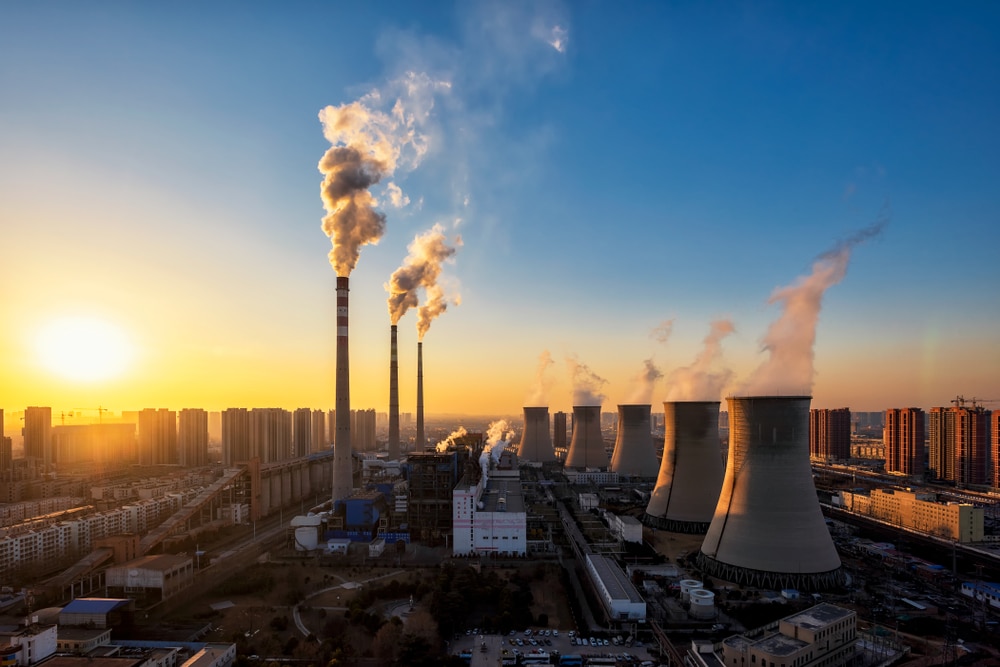China has revealed its plans to relaunch the China Certified Emissions Reduction scheme (CCER). The plan to reboot the CCER has been in the works as early as last year. However, it is now ready for operations to start.
In 2017, China had suspended the CCER scheme due to low trading volumes. The country now plans to reboot its voluntary carbon market through CCER.
China Beijing Green Exchange (CBGE) manages the relaunching project. On February 4th, the CBGE revealed that the registration and trading schemes for CCER were complete. The systems are ready for inspection before operations commence.
There is a lot of focus on China’s carbon emissions policies as the country is one of the largest economies in the world. It is also the number one carbon emitter in the world, with more than 10,000 million tonnes of CO2 emitted in 2020. It is responsible for almost 30% of the world’s carbon emissions.
This means that if the world wants to meet its net zero goals, China must successfully manage its CO2 emissions.
A World Bank report revealed last year that China would require $17 trillion in investments to achieve their net zero targets. These investments are in the power and transport sectors alone.
CCER will supplement China’s ETS in reducing carbon emissions
The CCER and China’s ETS (Emissions Trading Scheme) are crucial to China’s goals to reduce carbon emissions. The ETS began trading in 2021 and has completed its first compliance period.
The ETS is a scheme to limit or reduce carbon emissions. It is particularly prominent within the country’s power generation sector. It allocates emissions allowances to coal and gas-fired power plants but it will expand to other industrial sectors over time. The Shanghai Environment and Energy Exchange oversees the ETS.
In terms of capacity, ETS is currently the largest carbon market in the world. It is three times the size of the EU carbon market. Its capacity is close to an annual 4.5 billion tonnes of CO2. This represents 40% of the country’s total carbon emissions per year.
The way China allocates the allowances differs from the EU. In the EU, allowances are capped and decided upfront. China determines allowances based on emissions intensity.
- One allowance for a company means that it can emit 1 tonne of carbon.
In the first year of operation, the ETS was off to a slow start, which is not unusual for these schemes. In 2021, it traded 412 million tonnes worth of carbon allowances. For comparison, the EU’s ETS traded 321 million tonnes of CO2 allowances in its first year.
The current ETS only allows fossil-fuel based Independent Power Producers (IPPs) to benefit by trading credits. It leaves no room for renewables-based IPPs to benefit. This is the issue the CCER hopes to address. The current ETS will expand beyond the power sector into other industries.
China’s CCER scheme broken down
CCER was a scheme where the Chinese government certified voluntary carbon emissions reduction activities by companies. These include projects such as renewable energy, waste-to-power generation and forestry. These projects generated carbon credits which can be sold and traded.
CCERs could be used to offset carbon deficits or China Emissions Allowances (CEAs) deficits. Hence, companies with high emissions will pay entities like renewable power companies for credits.
However, there is a cap on CCER credits. It can offset 5% of emissions that exceed the ETS targets.
The CCER was first established in 2012. The country’s central economic planner, the National Development and Reform Commission (NDRC) introduced measures to encourage voluntary carbon emissions reduction activities.
With this scheme, both foreign and domestic entities were able to carry out transactions for different greenhouse gasses. These included carbon dioxide, methane, nitrous oxide, hydrofluorocarbons, perfluorocarbons and sulfur hexafluoride.
Why the CCER was suspended
According to the NDRC, the CCER had some issues that caused its suspension. Firstly, there were low trading volumes on the CCER. Secondly, there was little standardization when it came to carbon audits. As a result, CCER registrations were temporarily suspended.
What to expect with the relaunch
It was announced at the end of 2021 that the Beijing Green Exchange will oversee the CCER trading. The exchange will also be open to foreign investors.
Once launched, analysts predict that CCERs worth 300 million tonnes will be traded. The previous issue of low trading volumes in the CCER is also expected to be resolved. As the ETS expands to include more energy-intensive sectors, the CCER’s trading volume will increase.
However, the CCER relaunch does pose some challenges. How the ETS will incorporate the CCER scheme is not entirely clear yet. Currently, only wind and solar projects with an internal rate of return (IRR) of lower than 8% can apply for the CCER.
This requirement leaves out a lot of renewable energy projects. It means that only new renewable projects with low IRRs can truly benefit from the CCER relaunch.


